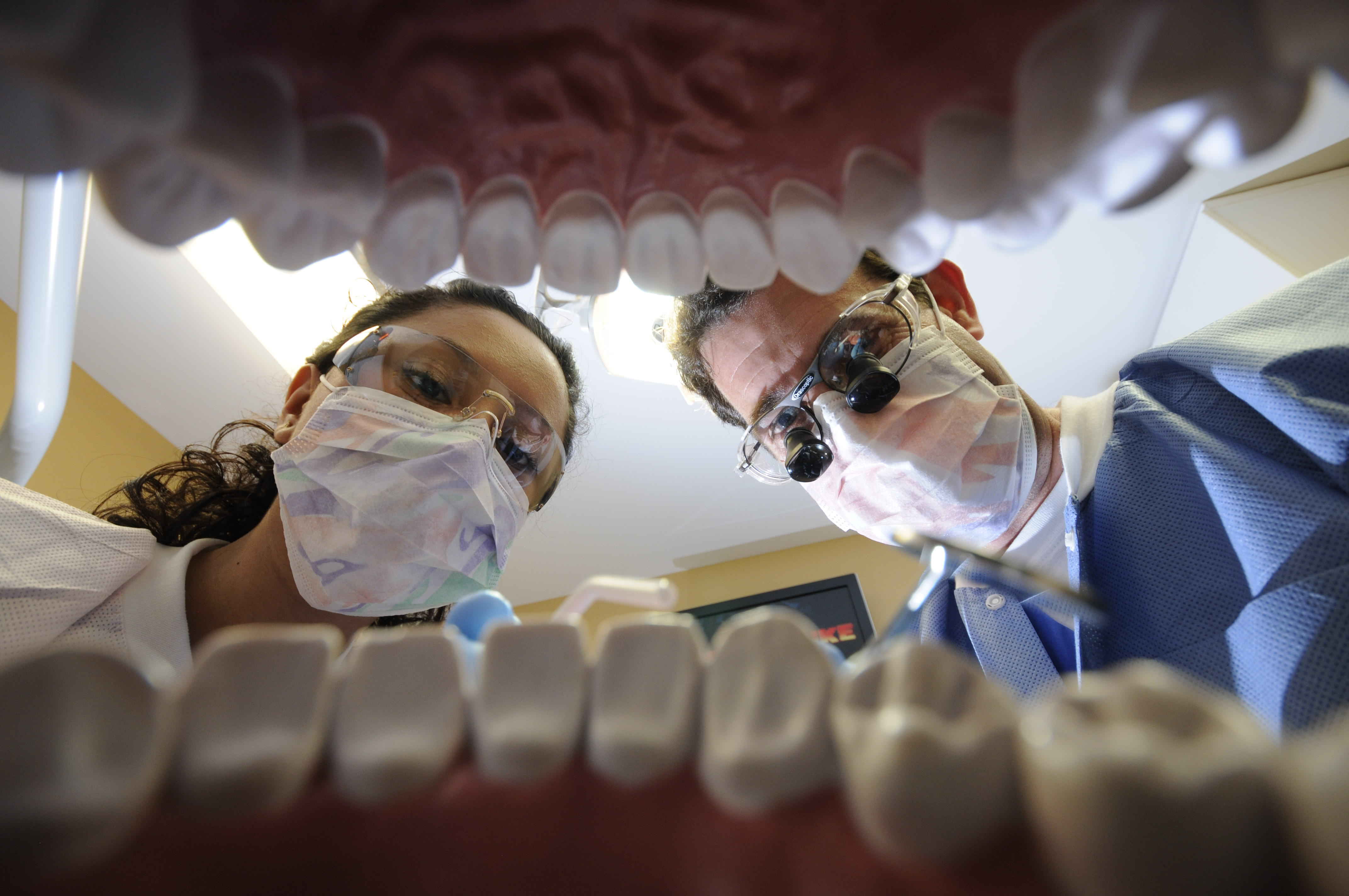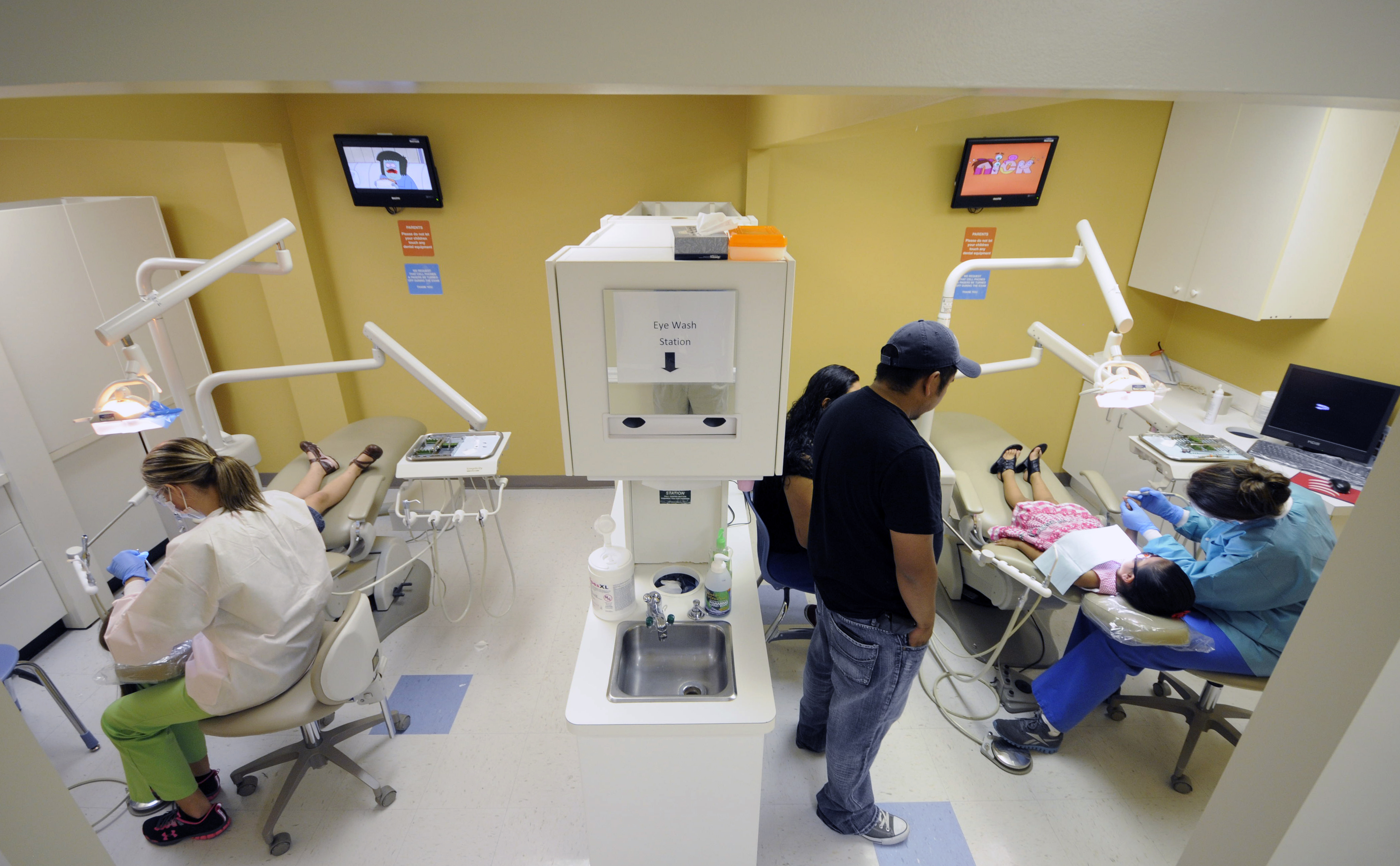BY THE NUMBERSPercentage of adults who visited a dentist, dental hygienist or dental clinic within the past year:Chattanooga health system area 66.0Knoxville health system area 61.7Nashville health system area 68.6Rome, Ga., health system area 63.9United States median 69.7Percentage of adults ages 18-64 who have lost six or more teeth to decay, infection or gum disease:Chattanooga health system area 19.1Knoxville health system area 25.2Nashville health system area 16.1Rome, Ga., health system area 14.8United States median 10.1(The Chattanooga health system area includes parts of Southeast Tennessee, Northwest Georgia and Northeast Alabama.)Source: The Commonwealth FundCOMING TUESDAYOnly about half the children in the nation enrolled in Medicaid programs have a dental visit every year.TO GET HELPChattanooga's health centers provide adult dental services on a sliding cost scale.Dodson Avenue Community Health Center: 1200 Dodson Ave., 423-778-2700Southside Community Health Center: 100 E. 37th St., 423-778-2700REMOTE AREA MEDICAL CLINIC VISIT SETKnoxville-based Remote Area Medical Volunteer Corps will provided free dental and medical care on Sept. 22 and 23 at Camp Joy in Hamilton County.
Tennessee's dental health can be measured in so many ways:
Twenty percent of adults ages 18-64 have lost six or more teeth because of decay, infection or gum disease, twice the national median, according to a report by the Commonwealth Fund, a health care advocacy group.
Only 66 percent visited a dentist or dental clinic in 2010, according to a Behavioral Risk Factor Surveillance System survey by the U.S. Centers for Disease Control and Prevention.
More than 53,000 visited a hospital emergency room for dental care in 2009, with about 24,000 of those visits for a preventable dental condition, according to a Pew Center study.
Alabama ranks even lower in most measurements than Tennessee. Georgia has better numbers but still ranks about 25th in the nation in many factors.
And the numbers are not just about teeth -- gum disease has been linked to heart and lung disease, diabetes and low-birth-weight babies. Tooth decay and infection cause pain, missed work and even death.
"Dental decay and infections cause all kinds of problems," said Stan Brock, founder of Knoxville-based Remote Area Medical Volunteer Corps. "We are doing full-mouth extractions for people in their 20s. People don't understand the desperate need for dental care in this country."
Not one of the measures is good, and all are getting worse for Tennessee adults.
Between 2005 and 2009, the number of emergency room visits for preventable dental care increased by 7 percent, the Pew study found.
The number of people who had visited a dentist or dental clinic in the last year dropped nearly 10 percent from 2005 to 2010, and the number of people who lost at least one permanent tooth increased to nearly 55 percent of the population -- putting Tennessee's ranking at 47th in the nation, according to the behavioral risk survey.
LACK OF ACCESS TO CARE
Dental heath and access to adequate dental care are a nationwide issue, with adults having the least access to appropriate care. Especially in rural areas, there often are not enough dentists to provide care.
Almost all the counties in the Chattanooga area qualify as federally underserved dental areas, which means they have less than one dentist per 50,000 residents. Bradley County is short nine dentists, and Whitfield County needs eight more to serve its residents, according to the U.S. Department of Health and Human Services website.
In addition, Medicaid programs in some states offer limited dental coverage to adults who qualify, but Medicare does not cover dental costs.
Tennessee and Alabama are among six states that do not cover dental care for Medicaid enrollees 21 or older. Georgia covers emergency services for adult Medicaid enrollees.
There is some access to low-cost care in the Chattanooga area -- Chattanooga's federally qualified community health centers primarily see adults, averaging about 2,600 patients a year in the last five years.
County health departments -- located in 54 of 89 rural counties and in five of the six metropolitan regions -- provide care to children under 21, but they only provide emergency dental care to adults, according to their website and spokeswoman Abena Williams. The fees are on a sliding scale.
In 2011, Hamilton County's three clinics provided care to 648 adults -- the lowest number in five years. Numbers for other counties were not available from the state.
Dr. Jim Gillcrist, TennCare Dental director, praised the service provided by county health departments, saying few states offer similar emergency care.
But Michele Johnson with the Tennessee Justice Center, disagreed that Tennessee does a good job of providing dental care to low-income adults. The Tennessee Justice Center is a nonprofit law and advocacy group.
Most low-cost clinics have more patients than they can handle, Johnson said. People without private insurance don't have a lot of options, she said.
"States can opt whether to cover any dental care, and Tennessee does not," Johnson said. "It's legal, but that doesn't mean it's right."
Brock and his volunteers have held at least 10 free medical clinics in Tennessee this year, including one in Sewanee on Saturday and Sunday. Anywhere from 50 to 85 percent of the hundreds or thousands of people who line up hours before the clinic opens are there for dental care, Brock said.
"It's the same everywhere we go," he said. "This is the sad reality, unless someone is going to deal with dental problems in a highly affordable manner."
ER VISITS
Lack of access to dental care often means that people with dental problems end up in emergency rooms. A Pew Center analysis released in February found that 830,590 people nationwide went to hospital emergency rooms for preventable dental care in 2009, up 16 percent from 2006.
In Tennessee, 53,574 people visited an emergency room for dental care in 2009, 92 percent of them adults ages 18-64, according to Pew research. Of those, 23,864 were for conditions such as cavities or abscesses.
The high numbers indicate that states aren't providing preventive care to the disadvantaged, the study notes.
"The study basically shows the system is broken and there are huge unmet needs," said Shelly Gehshan, director of the Pew Children's Dental Campaign. "These are really indigent people."
While the Pew study did not provide as detailed information for Georgia or Alabama, it found that about 60,000 emergency room visits in Georgia for nontraumatic dental problems cost more than $23 million in 2007.
Nearly 1,000 people visited Erlanger's emergency room in 2011 for dental care, according to spokeswoman Pat Charles. While the cost of those visits was not available, about 85 percent of the patients were covered by TennCare/Medicaid or uninsured, Charles said.
Emergency rooms are expensive places to treat preventive dental problems, adding pressure to states already dealing with tight budgets, the Pew study found.
The average cost of a Medicaid enrollee's inpatient hospital treatment for dental problems is nearly 10 times the cost of preventive care in a dentist's office.
In Tennessee, 41 percent of the preventable ER visits were Medicaid enrollees while another 41 percent were uninsured.
In addition, most emergency rooms do not have dentists on staff and cannot treat toothaches and dental abscesses adequately. One study has found that 80 percent of low-income patients who went to an emergency room for dental care needed follow-up care from a dentist.
"It's such a colossal waste of money," Gehshan said. "It's just pouring money down a hole."


